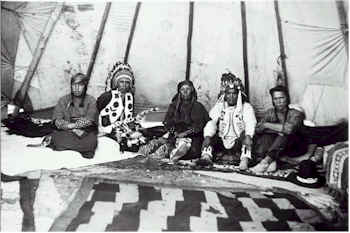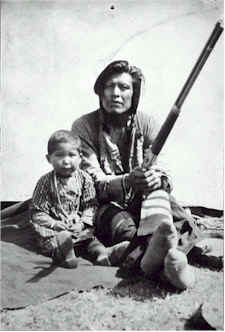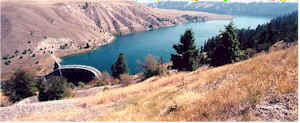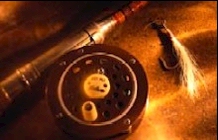|
I nformation by Angler Guide.com
from various source
A
short history of Montana’s Native Americans
The
history of the various modern tribes in the part of America we now
call "Montana," is characterized by movement within
seasonal cycles for many of them. They traversed the plains to
follow the bison and then retreated in intertribal struggles for
control of hunting territory. Finally, with the bison nearly
extinct and tribes decimated by battles with white men and
disease, there came the final move onto reservations, marking the
end of an era.
Archeological evidence shows that Native Americans
inhabited Montana more than 14,000 years ago. Artifacts indicate
the Kootenai have roots in the area's prehistory. The Kootenai
inhabited the mountainous terrain west of the divide, venturing
only seasonally to the east for buffalo hunts. The Salish, the
Pend d' Oreilles and the Crow were probably among the first
“modern” Indians to join the Kootenai in Montana.
Salish
members of the Woodcock family inside tipi, St. Ignatius,
Montana, 1924.
 |
The
Salish and the Pend d'Oreilles occupied territory as far east as
the Bighorn Mountains.
During the 1700’s these three tribes
shared common hunting and gathering grounds. With the signing of
the Hellgate Treaty, their massive landholdings were ceded and the
tribes now share the fertile ground of the Flathead Reservation.
Salish man
named Paul Challae and small child.
 |
FLATHEAD
-- THE PEOPLE
The
Flathead Indian Reservation is home to the Confederated Salish and
Kootenai tribes. The tribes are a combination of the Salish, the
Pend d'Oreilles and the Kootenai. Of the approximately 6,800
enrolled tribal members, about 3,700 live on or near the
reservation.
LOCATION:
North
of 1-90 between Missoula and Kalispell, fertile valleys and
towering mountain peaks of northwestern Montana surround the
Flathead Reservation. The reservation comprises over 1.2 million
acres.
ECONOMY:
Kerr Dam
Facilty.
 |
The principle sources of income for the tribes are derived from its
timber industry sales and from revenues paid to the tribes through
the co-license for the Kerr Dam facility with Montana Power
Company. The tribes also own a full-service Best Western resort
hotel in Polson named Kwataqnuk (which means "where the water
leaves the lake") and an electronics manufacturing facility,
S&K Electronics, Inc.
|





